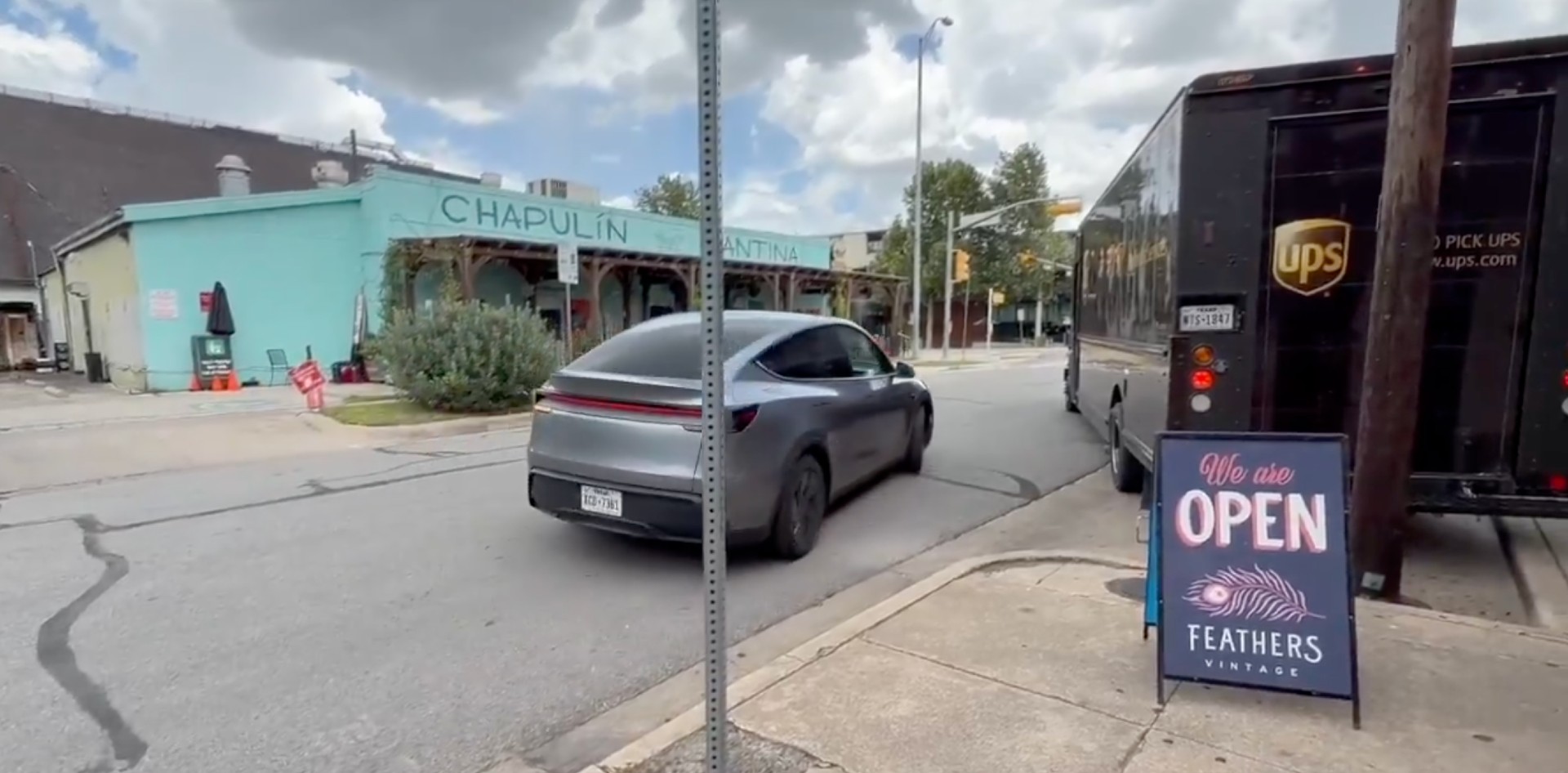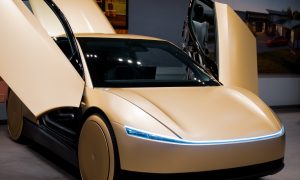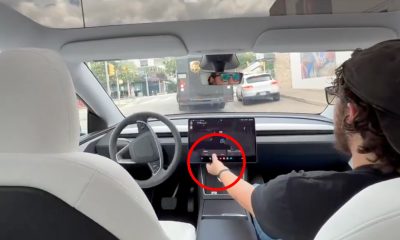

News
Tesla introduces Safety Score (Beta) system that incentivizes safe driving
As Tesla starts the rollout of its “Request Full Self Driving” button to more members of its fleet, the company has also introduced its Safety Score (Beta) system to evaluate driving behaviors. With this new system on hand, Tesla has effectively incentivized and gamified safe driving, which would likely make the rollout of programs such as FSD Beta a lot smoother and less likely to result in accidents.
Safety Scores are an assessment of driving behavior based on five metrics that the company calls “Safety Factors.” These factors are Forward Collision Warnings (FCW) per 1,000 Miles, Hard Braking, Aggressive Turning, Unsafe Following, and Forced Autopilot Disengagement. Tesla utilizes a Predicted Collision Frequency (PCF) formula based on statistical modeling using 6 billion miles of fleet data to predict how many collisions may occur per 1 million miles driven. The PCF is converted into a Safety Score between 0 and 100, which are then viewed through the Tesla App.

Tesla released some tips on how drivers could improve their Safety Score. To improve ratings on Forward Collision Warnings per 1,000 Miles, drivers are advised to maintain a following distance that gives enough time to react to slower or stationary vehicles ahead. Hard Braking scores, on the other hand, could be improved by engaging the brake pedal early when slowing down and using regen braking whenever possible and safe to do so. Hard Braking scores should also improve when drivers maintain a safe distance from the vehicle in front of them.
Aggressive Turning is defined as left/right acceleration in excess of 0.4g. Thus, drivers could improve their numbers in this metric by taking turns gradually, reducing their speed heading into a turn, and gradually accelerating afterward. Unsafe Following scores would likely be easy to improve, as drivers simply need to maintain a following distance worth several car lengths to the vehicle in front. This way, drivers could have enough time to react just in case something untoward happens.
Forced Autopilot Disengagement highlights the need to use the company’s advanced driver-assist features in a responsible manner. Proper Autopilot use is outlined in vehicles’ Owner’s Manual, and it requires drivers to have their hands on the wheel and pay close attention to the road. Tesla notes that the Forced Autopilot Disengagement metric is a 1 or 0 indicator, with the value being 1 if Autopilot forcibly disengages during a drive and 0 if the system is operated nominally.
- An example of a high Safety Score, reflecting generally good driving behaviors. (Credit: Jason DeBolt/Twitter)
- An example of a low Safety Score, reflecting some unsafe driving behaviors. (Credit: Tesla Raj/Twitter)
Safety Scores are updated every time a trip is taken on a Tesla vehicle. Provided that a Tesla is connected to the internet, Safety Scores should provide immediate feedback on a driving session. Vehicles that are not connected to the internet would update their Safety Scores as soon as cellular connectivity is secured. It should also be noted that all trips over 0.1 miles are considered as a valid driving session that could affect a driver’s rating.
Safety Scores are vehicle-specific as well, so drivers with multiple Teslas could have varying ratings for each of their cars. Lastly, Safety Scores should reset when a vehicle is sold, which means that a Tesla’s new owner should not be affected by the ratings of the previous driver. Drivers could also not carry over their Safety Scores from one vehicle if they purchase a new Tesla.
A full and extensive discussion of how Tesla’s Safety Scores work could be found here.
Don’t hesitate to contact us with account tips. Just send a message to [email protected] to give us a heads up.
Elon Musk
Elon Musk confirms Tesla Optimus V3 already uses Grok voice AI
Musk’s recent posts suggest that the development of Tesla’s humanoid robot is advancing steadily behind the scenes.

Tesla CEO Elon Musk has teased new progress on the company’s humanoid robot, Optimus. In a brief post on X, Musk shared that he had an “excellent review” with the Tesla Optimus team. He also confirmed that Optimus V3 is already using Grok voice assistant in a later reply.
Musk’s recent posts suggest that the development of Tesla’s humanoid robot is advancing steadily behind the scenes.
Grok Already Integrated
Musk’s recent comments about Optimus were shared on social media platform X. Initially, Musk posted that Optimus V3 would be (chef’s kiss), and that he just had an excellent review with the humanoid robot’s team. Considering Musk’s post, it was no surprise that some Tesla fans asked if Optimus would be able to talk using Grok, xAI’s large language model. Musk confirmed that Optimus “already does.”
Grok’s integration with Optimus may allow the robot to interact more naturally with its environment and users. Tesla previously noted that Optimus will rely on the same neural networks powering its Autopilot and FSD systems. The addition of Grok could then make Optimus even more user-friendly for regular consumers.
Closer to Production
The current iteration of Optimus features Tesla-designed actuators, improved limb control, and more human-like proportions. Recent demo videos released by the company showed Optimus units walking unassisted, balancing in place, and working in Tesla factories, among other tasks. Musk has also highlighted that Optimus would have upgraded hands with 22 degrees of freedom, close to a human hand.
Musk noted during the company’s Q1 2025 All Hands meeting that Tesla may be able to produce around 5,000 units this year. “This year, we hopefully will be able to make about 5,000 Optimus robots. We’re technically aiming for enough parts to make 10,000, maybe 12,000, but since it’s a totally new product with a totally new, like everything is totally new, I’ll say we’re succeeding if we get to half go the 10,000. But even 5,000 robots, that’s the size of a Roman legion, FYI,” Musk said during the meeting.
News
SpaceX launches Ax-4 mission to the ISS with international crew
The SpaceX Falcon 9 launched Axiom’s Ax-4 mission to ISS. Ax-4 crew will conduct 60+ science experiments during a 14-day stay on the ISS.

SpaceX launched the Falcon 9 rocket kickstarting Axiom Space’s Ax-4 mission to the International Space Station (ISS). Axiom’s Ax-4 mission is led by a historic international crew and lifted off from Kennedy Space Center’s Launch Complex 39A at 2:31 a.m. ET on June 25, 2025.
The Ax-4 crew is set to dock with the ISS around 7 a.m. ET on Thursday, June 26, 2025. Axiom Space, a Houston-based commercial space company, coordinated the mission with SpaceX for transportation and NASA for ISS access, with support from the European Space Agency and the astronauts’ governments.
The Ax-4 mission marks a milestone in global space collaboration. The Ax-4 crew, commanded by U.S. astronaut Peggy Whitson, includes Shubhanshu Shukla from India as the pilot, alongside mission specialists Sławosz Uznański-Wiśniewski from Poland and Tibor Kapu from Hungary.
“The trip marks the return to human spaceflight for those countries — their first government-sponsored flights in more than 40 years,” Axiom noted.
Shukla’s participation aligns with India’s Gaganyaan program planned for 2027. He is the first Indian astronaut to visit the ISS since Rakesh Sharma in 1984.
Axiom’s Ax-4 mission marks SpaceX’s 18th human spaceflight. The mission employs a Crew Dragon capsule atop a Falcon 9 rocket, designed with a launch escape system and “two-fault tolerant” for enhanced safety. The Axiom mission faced a few delays due to weather, a Falcon 9 leak, and an ISS Zvezda module leak investigation by NASA and Roscosmos before the recent successful launch.
As the crew prepares to execute its scientific objectives, SpaceX’s Ax-4 mission paves the way for a new era of inclusive space research, inspiring future generations and solidifying collaborative ties in the cosmos. During the Ax-4 crew’s 14-day stay in the ISS, the astronauts will conduct nearly 60 experiments.
“We’ll be conducting research that spans biology, material, and physical sciences as well as technology demonstrations,” said Whitson. “We’ll also be engaging with students around the world, sharing our experience and inspiring the next generation of explorers.”
SpaceX’s Ax-4 mission highlights Axiom’s role in advancing commercial spaceflight and fostering international partnerships. The mission strengthens global space exploration efforts by enabling historic spaceflight returns for India, Poland, and Hungary.
News
Watch the first true Tesla Robotaxi intervention by safety monitor
Watch the first Tesla Robotaxi intervention by a safety monitor.

Nearly 60 hours into the launch of the Tesla Robotaxi platform, it appears we have our first true intervention that required the in-car safety monitor to intervene.
We’ve seen and heard about a handful of minor issues with the Robotaxi fleet thus far, one of which included a risky, but very human-like behavior of navigating across yellow lines to a turn lane after missing a turn.
While that is not necessarily a legal maneuver, it is something that you’d see commonly from human drivers, and although aggressive, it is sometimes reasonable to perform depending on traffic conditions.
For what it’s worth, the car seemed very confused by the situation, and while the safety monitor did not get involved and the car handled the situation with no real issue, it is something as a rider you’d like to see less of.
First Look at Tesla’s Robotaxi App: features, design, and more
As previously stated, that specific example did not require any intervention by a safety monitor. On Tuesday, we saw a video of the first true intervention that required the safety monitor who sits in the passenger seat to intervene by pressing a button on the center touchscreen.
During a ride that Tesla investor and YouTuber Dave Lee was taking in Austin in a Robotaxi, the vehicle seemed to get a little confused by a UPS truck that was parallel parking in front of it. The monitor pressed the “Stop in Lane” button on the touchscreen:
This is the first intervention we’ve seen with Robotaxi (via @heydave7): https://t.co/5mp431Z5P8 pic.twitter.com/B9ji3iLa3a
— TESLARATI (@Teslarati) June 24, 2025
This appears to be one of the first errors shared by Tesla Robotaxi Early Access Program users that required the monitor to actually intervene. We have not seen any of it yet. You could also see the UPS truck is also a bit at fault here, as the space it pulled into did not seem even remotely large enough to fit the entire vehicle.
The car may not have anticipated that the truck would park there. You can see how the UPS truck was parked below, and it seems reasonable that the Tesla might not have thought it would attempt to fit there:

Credit: Dave Lee
The Model Y’s steering wheel was also turning sharply right into this spot, it appears. Dave ended his ride here, and stated that this was his dropoff spot. The UPS truck might have just cut off the Tesla, which led to the intervention.
It is a testament to Tesla’s strategy with this Robotaxi rollout. The company is obviously confident enough in the Full Self-Driving suite that it does not feel a human needs to be in the driver’s seat. However, it is still requiring someone, as of now, to sit in the passenger’s seat for instances just like this one.
Safety is the company’s priority with the launch of Robotaxi, and CEO Elon Musk has reiterated that. It is expected that we’d eventually see some kind of intervention that requires a monitor to step in. Everyone was safe.
Obviously, these things happen with autonomous vehicles. We’ve seen Waymos get stuck at intersections in very strange scenarios at times:
Waymo turned into oncoming traffic on the way to work.
It sat there confused for 45 seconds with its hazards on.
Then it proceeded to back up into oncoming traffic.
And they’re about to let these guys on the freeway 😂 pic.twitter.com/ZLRKx2loo1
— Jake Glaser | LA Multifamily (@LAMultiBroker) January 31, 2025
It is proof that autonomous tech is still in a growth phase and engineers are still learning about its capabilities. Tesla and other companies will learn from these rare cases and become better companies, and offer safer technologies because of it.
-

 News2 weeks ago
News2 weeks agoFirst Tesla driverless robotaxi spotted in the wild in Austin, TX
-

 Elon Musk2 weeks ago
Elon Musk2 weeks agoTesla sues former Optimus engineer for stealing trade secrets
-

 Elon Musk2 weeks ago
Elon Musk2 weeks agoTesla CEO Elon Musk reveals new details about Robotaxi rollout
-

 News2 weeks ago
News2 weeks agoSpaceX produces its 10 millionth Starlink kit
-

 News2 weeks ago
News2 weeks agoTesla Robotaxi just got a big benefit from the U.S. government
-

 News2 weeks ago
News2 weeks agoTesla launches new Model S and Model X, and the changes are slim
-

 News1 week ago
News1 week agoTesla confirms massive hardware change for autonomy improvement
-

 News2 weeks ago
News2 weeks agoTesla Model Y proudly takes its place as China’s best-selling SUV in May






















